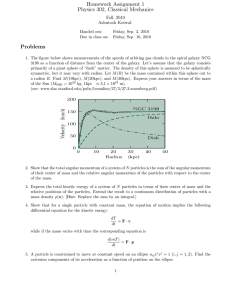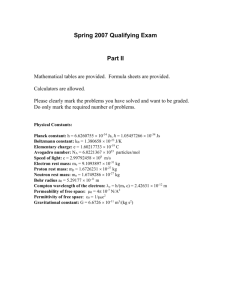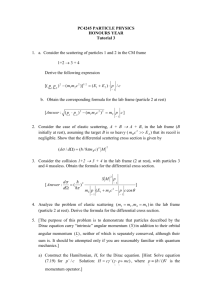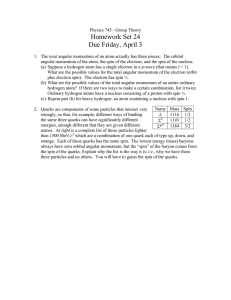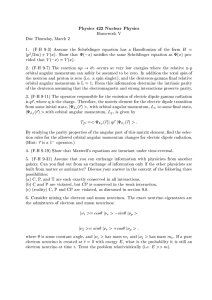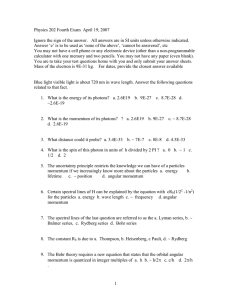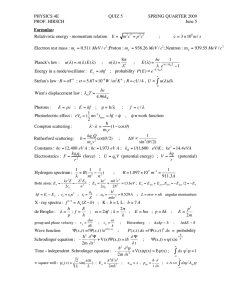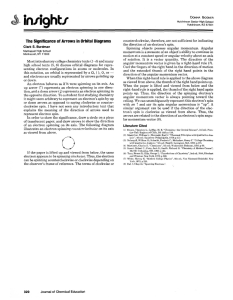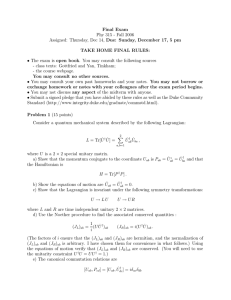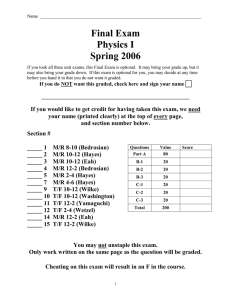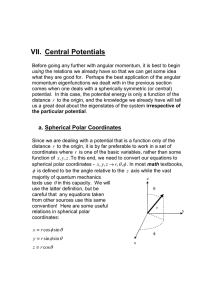PHY 4604 Fall 2008 — Final Exam Instructions:
advertisement
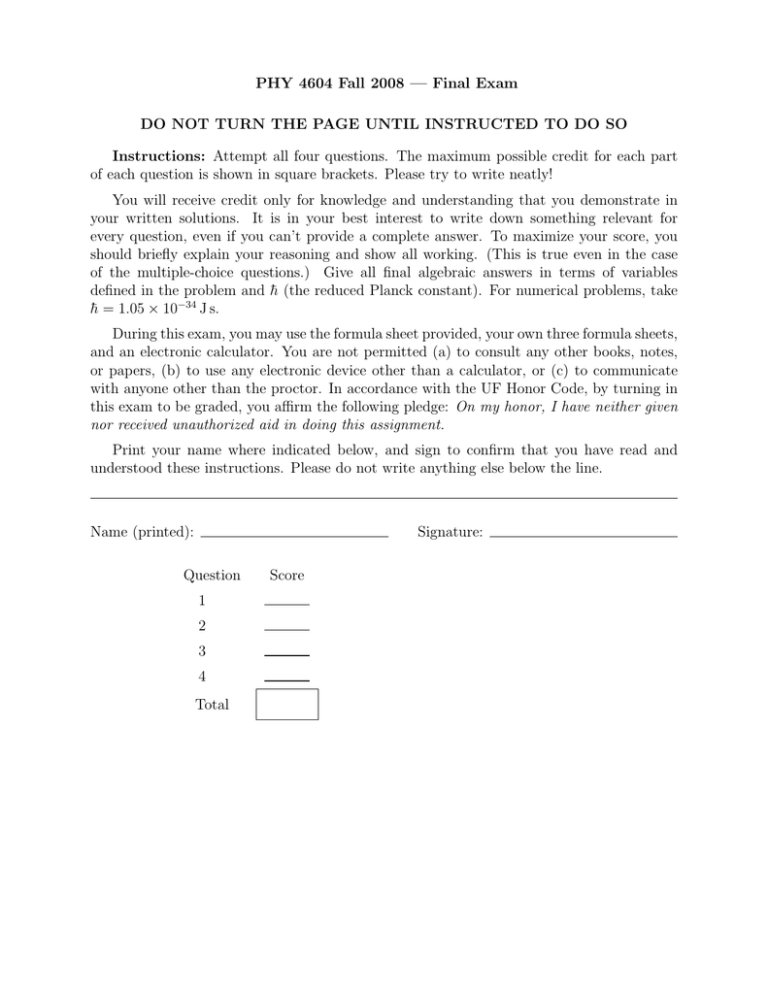
PHY 4604 Fall 2008 — Final Exam DO NOT TURN THE PAGE UNTIL INSTRUCTED TO DO SO Instructions: Attempt all four questions. The maximum possible credit for each part of each question is shown in square brackets. Please try to write neatly! You will receive credit only for knowledge and understanding that you demonstrate in your written solutions. It is in your best interest to write down something relevant for every question, even if you can’t provide a complete answer. To maximize your score, you should briefly explain your reasoning and show all working. (This is true even in the case of the multiple-choice questions.) Give all final algebraic answers in terms of variables defined in the problem and h̄ (the reduced Planck constant). For numerical problems, take h̄ = 1.05 × 10−34 J s. During this exam, you may use the formula sheet provided, your own three formula sheets, and an electronic calculator. You are not permitted (a) to consult any other books, notes, or papers, (b) to use any electronic device other than a calculator, or (c) to communicate with anyone other than the proctor. In accordance with the UF Honor Code, by turning in this exam to be graded, you affirm the following pledge: On my honor, I have neither given nor received unauthorized aid in doing this assignment. Print your name where indicated below, and sign to confirm that you have read and understood these instructions. Please do not write anything else below the line. Name (printed): Signature: Question 1 2 3 4 Total Score 1. [10 points total] For each part of this question, your final answer should be a letter from A through E. You must show your reasoning to get full credit. (a) [4 points] A free electron has a momentum of 5.0 × 10−24 kg m/s. The wavelength of its wave function is: (A) 1.3 × 10−8 m, (D) 2.1 × 10−13 m, (B) 1.3 × 10−10 m, (E) none of these. (C) 2.1 × 10−11 m, (b) [6 points] An electron is in a quantum state for which there are seven allowed values of Lz , the z component of the angular momentum. The magnitude squared of the angular momentum, L2 , is: (A) 3h̄2 , (B) 7h̄2 , (C) 9h̄2 , (D) 12h̄2 , (E) 14h̄2 . 2. [25 points total] A spinless particle has a wave function √ ψ(r, θ, φ) ∝ r e−r/a 1 + 6 sin θ cos φ , where a is real and positive. (a) [10 points] What is the most probable value of the radial coordinate r? (b) [15 points] What is the expectation value of L2 , the magnitude squared of the orbital angular momentum? 3. [30 points total] An electron is a spatial state characterized by orbital quantum numbers √ l = 1, ml = 1. Its spin state is |χi = (2 |↑i − |↓i)/ 5, where |↑i and |↓i are eigenkets of the spin-z operator Ŝz . (a) [10 points] Find the expectation value of the x component of the electron’s spin angular momentum. (b) [20 points] Find the possible results of a measurement of the magnitude of the electron’s total angular momentum, and the probability of obtaining each result. 4. [35 points total] Two particles of mass m moving in one dimension are confined by hard walls to the region 0 < x < a, inside which their Hamiltonian is 2 h̄2 ∂2 ∂ Ĥ = − . + 2m ∂x21 ∂x22 Each particle has the maximum possible z component of its spin angular momentum. (a) [10 points] Suppose that the two particles are distinguishable. List the normalized spatial wave functions—written in terms of single-particle stationary states ψn (x), where n is a non-negative integer—and the energies for the three two-particle stationary states of lowest energy. (b) [10 points] Redo (a) for identical bosons instead of distinguishable particles. (c) [10 points] Redo (a) for identical fermions instead of distinguishable particles. (d) [5 points] State in words how would your answers to (a)–(c) would be affected if the two particles were instead in a state of zero total spin. You may find it helpful to look at the table of Clebsch-Gordan coefficients. 2



